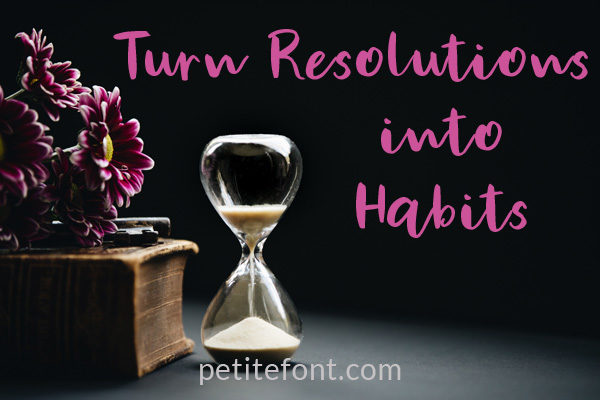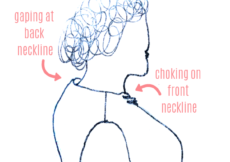The New Year will be here in a mere 31 days. That’s just over 4 weeks to start on those New Year’s resolutions that are so popular.
But what if you didn’t actually wait until the beginning of 2019 to start? What if you gave yourself those extra 4 weeks to jump start your plans? How much more committed or successful could you be if you had 13 months instead of only 12 to complete your goals?
The truth is you never have to wait to start something new. There’s no reason a new diet, for example, can’t start on a Wednesday or even a Friday instead of Monday.
According to the online polling firm YouGov, the 5 most popular resolutions for 2018 were:
- Eat better
- Exercise more
- Spend less money
- Self-care (e.g. getting more sleep)
- Read more books
There was also a sixth one I’m going to include on this list because the first two tend to go hand in hand: learn a new skill.
None of these resolutions are set up as S.M.A.R.T. goals (specific, measurable, achievable, relevant, time-based). They’re all a bit vague, which makes them more challenging to achieve. If a resolution doesn’t have a defined end-goal, then it’s harder to tell if you’ve actually reached it.
However, anything that you can commit to doing consistently is what becomes successful. The key to succeeding at these types of resolutions is not necessarily to hit some random number. It’s to develop better long-term habits that become so ingrained, you don’t even have to think of them anymore.
Resolution: Eat Better/Exercise More
I’m grouping these two New Year’s resolutions together because they’re complements of each other. They are also both a little more challenging at the end of the year. Given the increase in holiday parties with rich food, it can be harder to stick to a meal plan or even just make your workout.
That doesn’t mean you can’t try!
I gave a list of 7 tips for doing this recently.
How to make this a habit
Improve your diet by adding one additional fruit or vegetable a day. Already eating a green salad with lunch? Add some shredded carrots! Used to snacking on a little sweet piece of candy in the afternoon, to pep yourself up? Try eating an apple instead. And take a walk around the block on your 15-minute break (or up and down some stairs, if weather is inclement).
It’s small steps like this that can help you stay on track. You can also build on them. Instead of just walking around the block, aim for a certain amount of steps in that break time. Got your apple a day down? Add another fruit or vegetable. Little by little, your fiber intake and daily moves increase but by small enough increments that it doesn’t feel overwhelming.
For more inspiration, Instagram accounts like @movingdietician’s Spot the Difference series give real-life examples of small changes that add up to a big impact.
Resolution: Spend less money

With the year-end sales looming, and all advertising designed to make you want to empty your wallet, it can be hard to resist spending more money. But if you started adding to the piggybank TODAY for next year’s sales, how much more extra (and disposable) money would you have?
If the current season is still too expensive due to large family or friend groups, suggest starting a Secret Santa exchange. In our family, the adults now do Secret Santa. With 10 of us, that means 9 fewer gifts to buy! And with a $25 limit, it’s so much easier on the bank account.
Simply don’t have the money to spend on gifts? There is no shame in taking care of bills and rent first before buying for others. There’s a reason that on a plane when given the emergency spiel, we’re instructed to put on our own masks before helping others. You have to look out for yourself first. For more tips, here are 50 more ways to save money during the holidays.
How to make this a habit
Aside from shopping on sale and using coupons (or apps like Ebates and Ibotta), you can start even smaller by simply saving your change. We keep a jar in the house into which we empty our loose change. We save this up all year long and then cash it in for a December treat. We consistently save up between $80 and $100—just through loose change!
Imagine what you could do with an extra $100 this time next year.
Resolution: Self-care

This resolution is super important and lines up with what I wrote above about looking out for you. Start this NOW. Whether that means giving yourself a home facial once a week, or getting more sleep every night, or brushing your teeth more often, there’s no reason not to start right away.
Wherever you are reading this, I’m willing to bet you can simply stop and take one deep breath right now. I dare you to do it.
Right now. Take a deep breath. Let it out.
That right there is self-care.
How to make this a habit
Tiny Buddha has a list of 45 more self-care practices. Pick your favorite from that list, or make up your own, and simply start doing it. This might take a little bit of practice, especially if self-care is new to you. But remember: it’s also as simple as breathing.
Resolution: Read more books

This is one of my personal resolutions that I might fall short on this year! I had a goal of 12 books in 2018, merely one a month. I’ve read or listened to* only 8. That’s pretty pathetic for me, especially since I used to be such a voracious reader. So as I’m writing this, I’m realigning my priorities to allow me to finish those last 4 books this month.
*Yes, listening to books absolutely counts as “reading.”
I used to have a supremely long commute to work. It took me about 90 minutes to arrive in the morning and 2 hours to get home. I also drove a stick shift at the time, but that’s a different story. In the first month alone, I listened to 4 books. That’s a hell of a lot faster than I can read, and it was a great way to use up that dead time.
It was also a really great distraction from the anger of sitting in traffic…
How to make this a habit
The experts are always telling us to stop staring at our screens, so pick up a book instead. Or play it in the background as your driving, making dinner, exercising, what-have-you. Audible has a free 30-day trial. You could get through 4 books this month for free!
And then maybe this time next year you won’t be scrambling like me to make your reading goal.
Bonus: this can also fall under “self-care.”
Resolution: Learn a new skill

Learning is never something that should be put off for the future. Your brain will never again be as fresh and young as it is right now. Think about it. In 4 weeks, your brain will be that much older. That much slower. That much more difficult to train.
Why wait?
Okay, maybe you’re expecting to start a new class or career next month. That’s great! Why not spend the next 4 weeks ramping up? Get a little bit of knowledge under your belt now so that it’s not so foreign when you start “for real” next month.
The internet is chock full of resources, both free and paid, that there really is no excuse not to learn. If you have internet access to read this, you have access to these resources. Whether it be on YouTube or paid courses like Bluprint or Creativebug (aff links), it’s all there for the taking.
How to make this a habit
The Harvard Business Review has a list from Gretchen Rubin, author of The Happiness Project, on how to do this very thing. The key takeaways are to be specific about what you want to learn and schedule it into your day. This is also great for workouts. You’re much more likely to do something you’ve made an “appointment” for than a vague item on a mental to-do list.
For more on making habits stick, check out this article from Lifehack.
What habits are you planning to create in the next 31 weeks? And how successful do you plan to be in 13 months?








Sounds like a great plan! I’ve found bullet journaling to help me when I get off track.